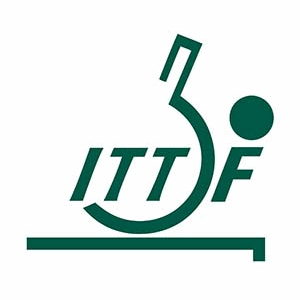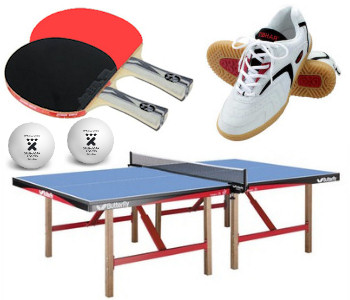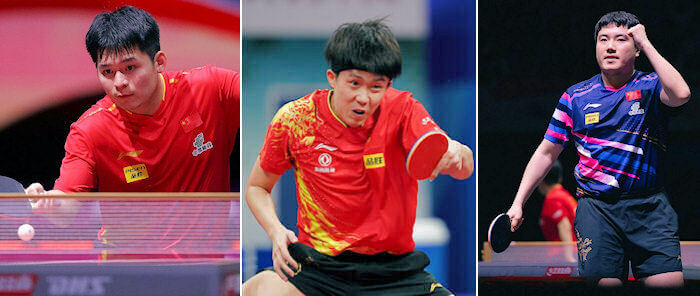You Are Here: Home » Best Table Tennis Players » World Rankings
Table Tennis World Ranking
The table tennis world ranking list is a computerised rating system.
So who are the best players? Find out here...
By Martin Hughes
Owner and Editor

The International Table Tennis Federation (ITTF) produces a world ranking list by entering the results of matches played in authorised events into a computerised database.
Using these results, the ITTF is able to produce a current list of the best table tennis players in the world.
Separate ranking lists are produced for the senior men and senior women together with separate ranking lists only for players under 19 years of age, under 17 years, under 15 years, under 13 years and under 11 years.
These ranking lists are used for determining seeding in all tournaments and for selecting players for certain competitions.
TABLE TENNIS EXPERT
REVEALS HIS SECRETS
Click Here For Details

So, let's take a brief look at the system, which players dominate, and then the world ranking lists themselves.
2018 - A New System
With effect from 1 January 2018 the ITTF introduced a new system for calculating world rankings.
It's much simpler than the previous system and it's designed to encourage players to play in more World Ranking events.
Players now receive World Ranking Points based only on the final position they reach at tournaments. So, the better they perform, the more points they'll receive.
The number of World Ranking Points a player receives varies according to the competition being played, with the most prestigious events offering the most points.
These were amended again in 2021 with the formation of the WTT series of events.
NB. The WTT series of events replaced the previous series of tournaments which made up the ITTF Pro/World Tour from 1996-2020.
TABLE TENNIS EXPERT
REVEALS HIS SECRETS
Click Here For Details

Click here for a large selection of
table tennis equipment at Megaspin *

Click here for a large selection of
table tennis equipment at Bribar *
^ Top of page ^
But it's limited to...
8 of the Best
Although players can enter many events throughout the year, only their best 8 results during the last 12 months are used (with a maximum of one continental event) to calculate their World Ranking.
The previous system also included losing points when they lost a match, but this no longer applies.
And separate ranking lists are now calculated for each age category by only using results achieved in the respective age category. In the previous system, only one list was compiled and rankings for the age categories were just a sub set of the main list.
^ Top of page ^
^ Top of page ^
But how do you get on to the World Ranking list?
New players
Under the pre-2018 system, players entered the table tennis world ranking list as soon as they had at least two wins against players already ranked.
Players were given Starting Points and these starting points were re-calculated each time a new World Ranking was produced, up to the moment a player reached or passed the limit of five wins and five losses against already ranked players.
Then these "Starting Points" become final.
But under the new system, every player who has earned ITTF Ranking points in an eligible tournament during the ranking period is included in the ITTF World Rankings.
^ Top of page ^
^ Top of page ^
So...
Who dominates the world ranking lists?
Well, as you might expect, the Asian players, particularly the Chinese table tennis players, have dominated the table tennis world rankings for many years.
However, players such as Brazil's Hugo Calderano, together with Felix and Alexis Lebrun from France are now riding high in the top twenty.
Three of the best men in the World Ranking List - All Chinese!
 by courtesy of the ITTF
by courtesy of the ITTF
^ Top of page ^
Here are the...
Latest table tennis world rankings
Please check this page each month for an update.
| MEN (December 2025) | ||
|---|---|---|
| Ranking | Player (FAMILY Name, Given Name) | Association |
| 1 | WANG, Chuqin | China |
| 2 | LIN, Shidong | China |
| 3 | CALDERANO, Hugo | Brazil |
| 4 | MOREGARD, Truls | Sweden |
| 5 | HARIMOTO, Tomokazu | Japan |
| 6 | LEBRUN, Felix | France |
| 7 | LIANG, Jingkun | China |
| 8 | MATSUSHIMA, Sora | Japan |
| 9 | QIU, Dang | Germany |
| 10 | LEBRUN, Alexis | France |
| 11 | XIANG, Peng | China |
| 12 | DUDA, Benedikt | Germany |
| 13 | LIN, Yun-Ju | Chinese Taipei |
| 14 | JORGIC, Darko | Slovenia |
| 15 | AN, Jaehyun | South Korea |
| 16 | LIND, Anders | Sweden |
| 17 | GAUZY, Simon | France |
| 18 | JANG, Woojin | South Korea |
| 19 | LEE, Sang Su | South Korea |
| 20 | TOGAMI, Shunsuke | Japan |
^ Top of page ^
| WOMEN (December 2025) | ||
|---|---|---|
| Ranking | Player (FAMILY Name, Given Name) | Association |
| 1 | SUN, Yingsha | China |
| 2 | WANG, Manyu | China |
| 3 | CHEN, Xingtong | China |
| 4 | KUAI, Man | China |
| 5 | WANG, Yidi | China |
| 6 | HARIMOTO, Miwa | Japan |
| 7 | ZHU, Yuling | Macao |
| 8 | ITO, Mima | Japan |
| 9 | CHEN, Yi | China |
| 10 | HAYATA, Hina | Japan |
| 11 | HASHIMOTO, Honoka | Japan |
| 12 | SHIN, Yubin | South Korea |
| 13 | SHI, Xunyao | China |
| 14 | ODO, Satsuki | Japan |
| 15 | NAGASAKI, Miyu | Japan |
| 16 | WINTER, Sabine | Germany |
| 17 | KIHARA, Miyuu | Japan |
| 18 | JOO, Cheonhui | South Korea |
| 19 | TAKAHASHI, Bruna | Brazil |
| 20 | DIAZ, Adriana | Puerto Rica |
^ Top of page ^
Click here for a large selection of
table tennis equipment at Megaspin *

Click here for a large selection of
table tennis equipment at Bribar *
^ Top of page ^
You Are Here: Home » Best Table Tennis Players » World Rankings
